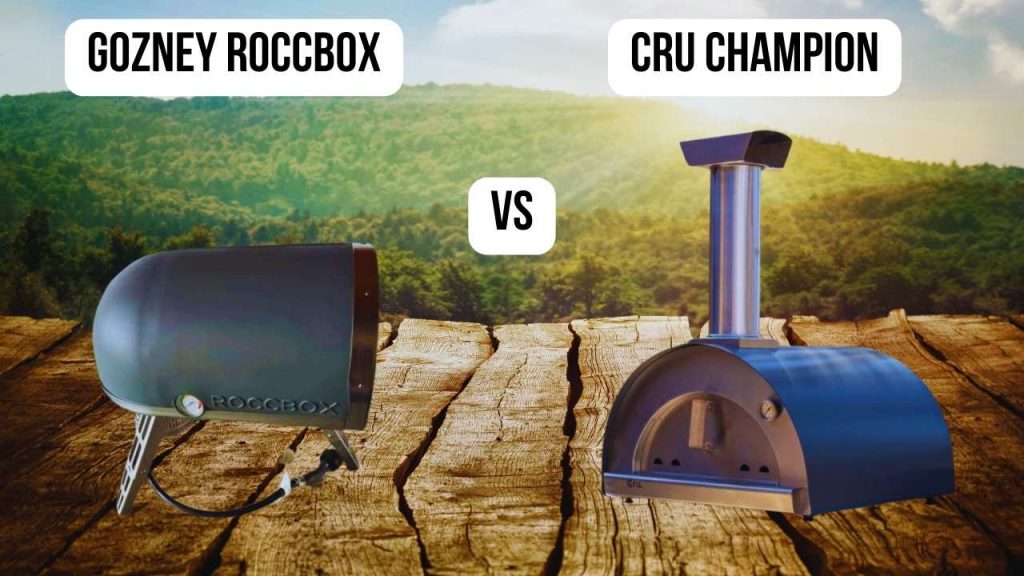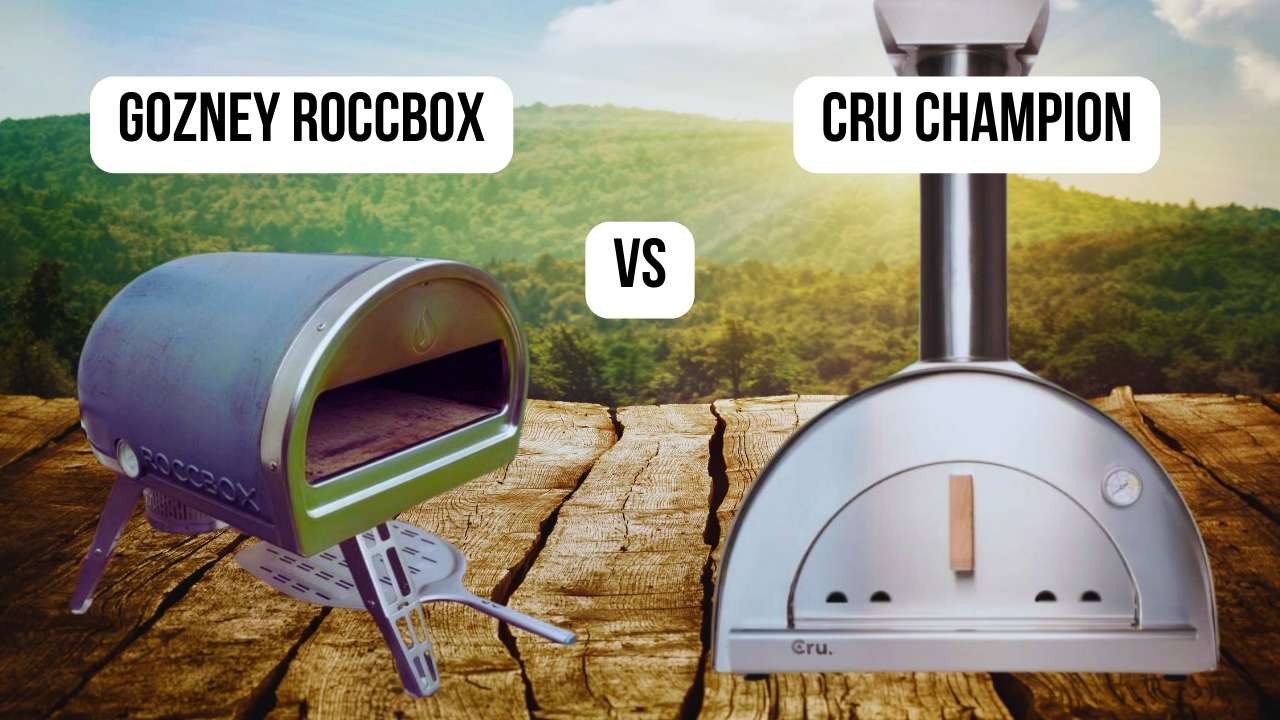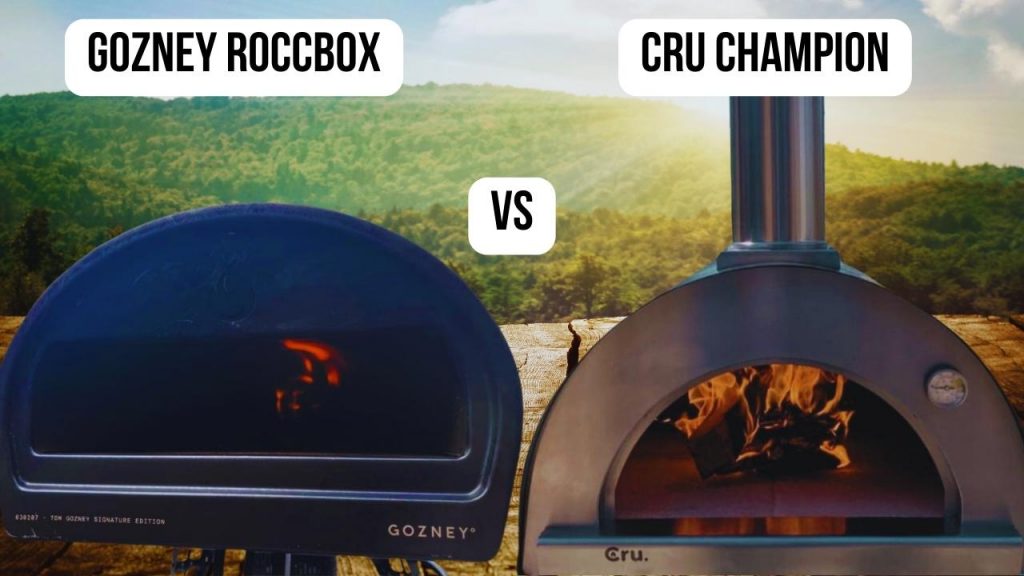As a restaurant chef with over 10 years of experience at Dequte Restaurant LironBoylston, I’ve had the opportunity to test both the Gozney Roccbox and the Cru Champion pizza ovens in my kitchen. In this comparison, I’ll cover key factors such as quality and materials, temperature control, shape, first-time usage impressions, power source, size, ease of cleaning, and a real pizza cooking test to show how each performs under real conditions. For a more in-depth look at my testing methods, feel free to check out my separate article on the testing process.
- Gozney Roccbox: A high-performance, versatile pizza oven known for its ability to reach impressive temperatures and produce restaurant-quality pizzas.
- Cru Champion: A robust, wood-fired oven that brings traditional flavors and the experience of a classic wood-fired bake to any outdoor setting.
This article offers a comprehensive comparison of the Gozney Roccbox vs. Cru Champion, based on my own testing experience.
It’s no wonder Gozney Roccbox is in today’s the TOP-5 pizza ovens.
Disclaimer: I’ve included referral links below; if you decide to purchase one, I’d greatly appreciate it if you used them. It helps keep my blog alive at no additional cost to you!
Gozney Roccbox VS Cru Champion: Quality and Materials
| The Gozney Roccbox’s build quality is simply outstanding. Its dense insulation and thick stone floor ensure it maintains high heat consistently, perfect for making crispy, restaurant-quality pizzas. In my kitchen, I noticed how the Roccbox feels sturdier and more polished compared to the Cru Champion. |
The Cru Champion is also impressive with its robust construction using a mix of ceramic stone and stainless steel. However, the chimney showed some wear after a few uses, unlike the Roccbox which maintained its shine. That said, the Cru’s solid stone base is excellent for retaining heat, though the Roccbox’s insulation outperformed it in longer cooking sessions.
|
Gozney Roccbox VS Cru Champion: Temperature Control
| The Roccbox excels in temperature control. It reached 950°F in under 15 minutes during my tests, holding that heat consistently. This precision allows for quick, one-minute pizzas with perfectly crispy crusts. |
The Cru Champion also reaches high temperatures, around 900°F, but took closer to 20 minutes to fully heat up. I found it required more attention to keep temperatures steady, especially when using wood. However, the wood-fired flavor in the Cru adds a smoky depth that the gas-powered Roccbox can’t replicate.
|
 Gozney Roccbox VS Cru Champion: Shape
Gozney Roccbox VS Cru Champion: Shape
| The compact dome shape of the Gozney Roccbox ensures even heat distribution, which is noticeable when cooking multiple pizzas back-to-back. Its design minimizes heat loss, giving it an edge over the Cru Champion in terms of efficiency. |
The Cru Champion’s semi-round dome shape is spacious, allowing for larger pizzas (up to 18”) or even two smaller ones at once. However, I found that its larger opening meant more heat escape compared to the Roccbox, which could affect the crust crispiness if not monitored closely.
|
Gozney Roccbox VS Cru Champion: First-Time Usage Impressions
| The Roccbox is incredibly user-friendly. During my first test, I was able to get it up and running with minimal fuss. Adjusting temperatures and checking the progress through the viewing window made it easy to achieve perfect results. |
The Cru Champion, on the other hand, took a bit more effort to get used to. While it’s straightforward once you get the hang of it, managing the wood fire and maintaining even heat was initially a challenge. However, once mastered, it’s fantastic for outdoor cooking sessions.
|
Gozney Roccbox VS Cru Champion: Power Source
| The Gozney Roccbox offers the flexibility of both gas and wood. For busy nights at my restaurant, I appreciated the convenience of quickly switching to gas, while still having the option to use wood for that authentic flavor. |
The Cru Champion sticks to wood and charcoal, which enhances flavor but requires more hands-on management. If you’re passionate about traditional wood-fired cooking, the Cru is perfect, but the Roccbox’s dual fuel capability offers more versatility, especially for those who prefer convenience.
|
Gozney Roccbox VS Cru Champion: Size
| At 49.9 pounds, the Roccbox is relatively easy to move around, making it great for outdoor gatherings or catering events. Its compact design doesn’t sacrifice performance. |
The Cru Champion is significantly bulkier, with a larger cooking surface. It’s perfect for backyard parties where you’re serving many guests, but it’s not as portable as the Roccbox. I found it best suited for a permanent outdoor setup rather than moving it around frequently.
|
Gozney Roccbox VS Cru Champion: Ease of Cleaning
| Cleaning the Gozney Roccbox is a breeze. After each session, a quick brush of the stone and a wipe-down of the exterior kept it looking brand new. The compact design makes maintenance simple. |
The Cru Champion’s removable dome makes it easy to access the interior for cleaning. However, due to its larger size and heavier build, it takes a bit more effort. Still, the detachable components are a nice touch for thorough cleaning.
|
Pizza Cooking Test
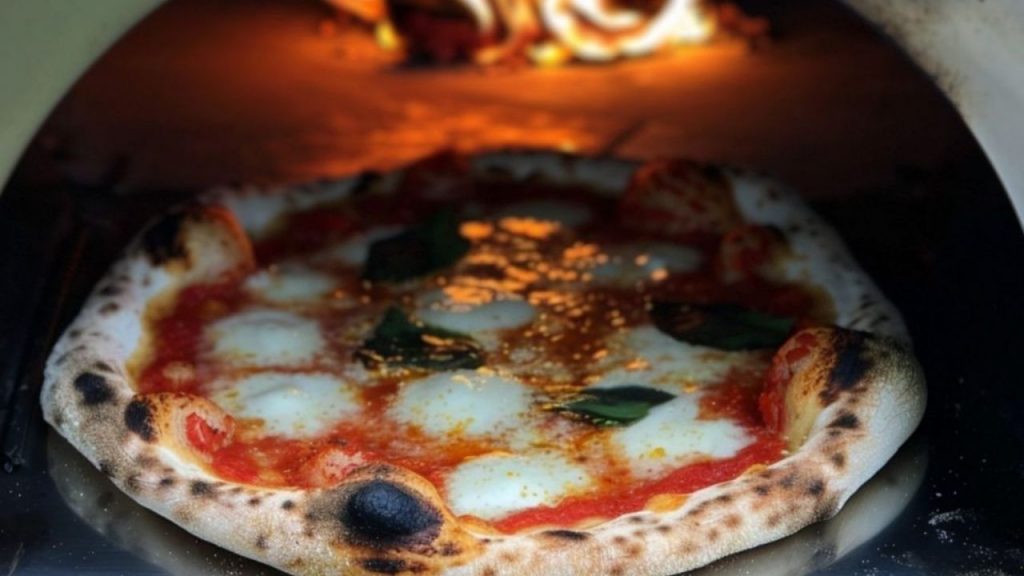
When it came to heating up, the Gozney Roccbox impressed me right off the bat. It took just 15 minutes to reach its maximum temperature of 950°F. This quick heat-up time is perfect when you’re short on time but craving that authentic pizza experience.
For the cooking test, I crafted a classic Margherita pizza using fresh dough, tomato sauce, mozzarella, and basil. The Roccbox cooked it to perfection in just 60 seconds. The crust came out beautifully crispy on the outside while staying soft and chewy inside, with the cheese bubbling and slightly caramelized. The even heat distribution ensured every slice was cooked consistently. The taste? Absolutely spot-on with that classic Neapolitan flavor—crispy edges and perfectly melted cheese.
The Cru Champion, on the other hand, requires a bit more patience. It took around 20 minutes to reach its ideal cooking temperature of around 900°F. Using wood as the fuel source added that rich, smoky aroma which enhanced the overall flavor.
Once preheated, the Cru Champion cooked the same Margherita pizza in about 90 seconds. The crust had a slightly deeper char, which added a smoky complexity that the Roccbox couldn’t replicate. The pizza’s bottom was crispy, while the interior remained soft and airy. The added flavor from the wood fire was a clear highlight, making the pizza taste like it came straight from an Italian pizzeria. However, the Cru required more attention during cooking to ensure the pizza didn’t overcook in spots, given its larger opening.
Both ovens produced delicious pizzas, but they each excel in different areas. The Gozney Roccbox is unbeatable in speed and ease, making it perfect for quick, consistent results. In contrast, the Cru Champion’s wood-fired method added a smoky richness that will appeal to those who enjoy a more hands-on cooking experience.
How We Tested
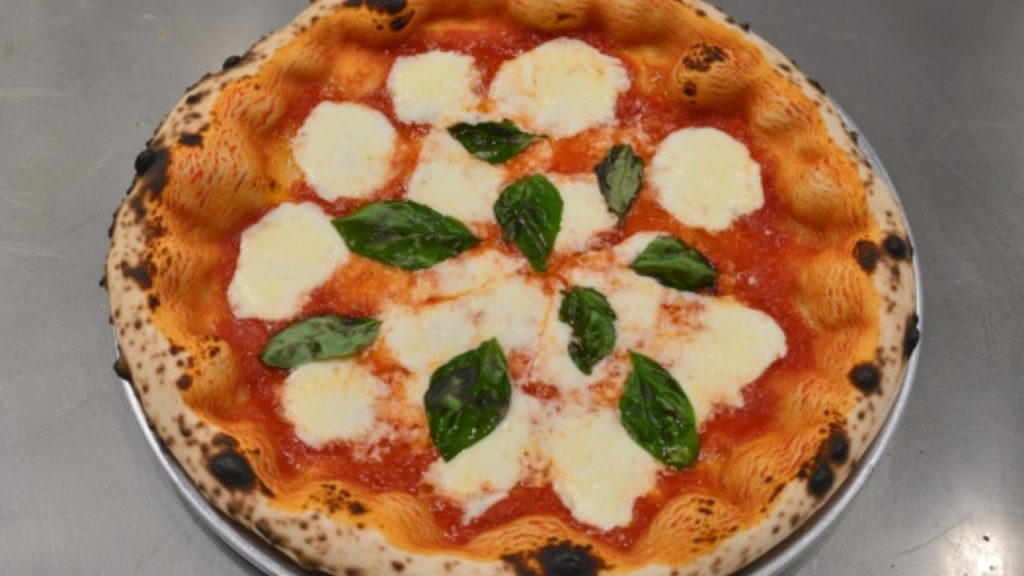
To ensure a fair comparison, we tested both the Gozney Roccbox and the Cru Champion pizza ovens in the same outdoor environment. We used each oven to cook classic Margherita pizzas, focusing on preheating times, cooking duration, and overall pizza quality.
For the Gozney Roccbox, we used propane fuel, which allowed it to heat up quickly to its advertised 950°F. We timed how long it took to reach its maximum temperature and monitored how consistently it maintained heat throughout the cooking process. The Roccbox is designed to achieve high heat in a short time, so we aimed to assess how well it performed under those conditions.
With the Cru Champion, we opted for wood as the fuel source to fully utilize its wood-fired capabilities. We took note of how long it took to build and stabilize the fire, observing how efficiently the oven retained heat and whether the temperature was consistent throughout the cooking. The larger cooking chamber of the Cru Champion gave us space to experiment with different positions for the pizza, ensuring we achieved even browning and a well-cooked crust.
We used the same pizza dough and fresh ingredients for both ovens to maintain consistency. By cooking multiple pizzas back-to-back, we were able to observe how well each oven retained heat and whether there was a drop in temperature between bakes. Throughout the process, we paid close attention to the texture of the crust, the melt of the cheese, and the overall flavor profile.
Ultimately, our goal was to evaluate how each oven performed in a real-world setting, considering factors like ease of use, cooking speed, and the final taste of the pizza.
Conclusion
